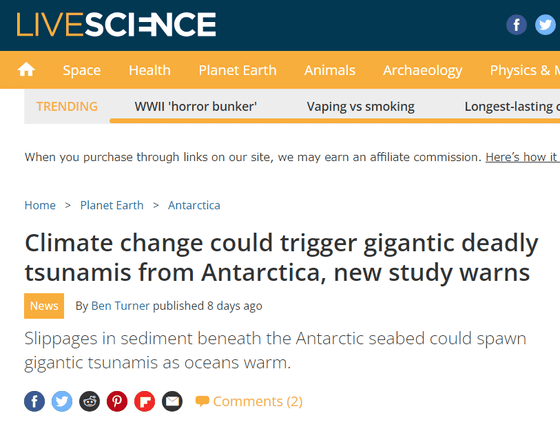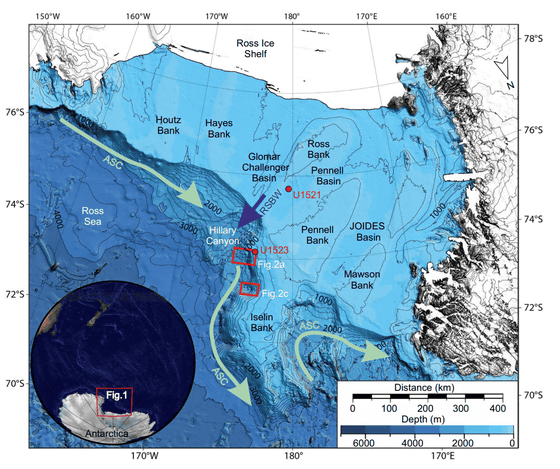A submarine landslide occurs off the coast of Antarctica due to climate change, a huge tsunami may occur, and many human lives may be lost

A geological survey of Antarctica has reported that traces of a huge tsunami caused by a landslide in Antarctica were found in strata of 3 million years ago and 15 million years ago. According to the paper, a huge tsunami has flooded South America, New Zealand, and Southeast Asia, and researchers warn that similar phenomena may occur if sea temperatures rise due to future climate change.
Climate-controlled submarine landslides on the Antarctic continental margin |
https://doi.org/10.1038/s41467-023-38240-y

Climate change-caused underwater landslides could spawn gigantic tsunamis from the Antarctic | Live Science
https://www.livescience.com/planet-earth/antarctica/climate-change-could-trigger-gigantic-deadly-tsunamis-from-antarctica-new-study-warns

The first record of a landslide in Antarctica was found in the Ross Sea off Antarctica in 2017. The stratum contains a layer of ``loose sediment'' filled with phytoplankton fossils, which is believed to indicate a landslide.

In 2018, the research team again drilled deep into the seafloor in the Ross Sea and collected a ``sediment core'' that hollowed out the stratum into an elongated columnar shape. Analysis of this sediment core revealed that loose sediment layers were formed approximately 3 million years ago during the Pliocene and approximately 15 million years ago during the Miocene. It was also found that the temperature was about 3°C warmer than today. It is believed that this rise in sea temperature led to the emergence of algae, which died out and became sediments, and that the melting of glacial ice caused by global warming lightened the load on the plates around Antarctica, causing landslides. It is possible.
'The loose sediment layer is a cold climate,' said Robert McKay, director of the Center for Antarctic Research at the University of Victoria Wellington and co-principal scientist on the International Marine Discovery Program's Expedition 374, which extracted the sediment core in 2018. It was between ice ages and was covered with a thick layer of coarse gravel carried by glaciers and icebergs.'
The research team said, ``There are many sediments buried in the Antarctic seafloor, and the glaciers on the surface are gradually melting. Even today, when the melting of the seawater is viewed as a problem, there is still the possibility of another tsunami caused by a submarine landslide.”

It is unknown how large the huge tsunami caused by this submarine landslide hundreds of years ago was. However, there have been recent cases of tsunamis caused by submarine landslides. In 1929, a tsunami caused by a submarine landslide near Newfoundland in Canada reached a height of 13 meters and killed about 28 people. The 15-meter tsunami that hit Papua New Guinea in 1998 was also caused by a submarine landslide, killing about 2,200 people.
Related Posts:
in Science, Posted by log1i_yk







